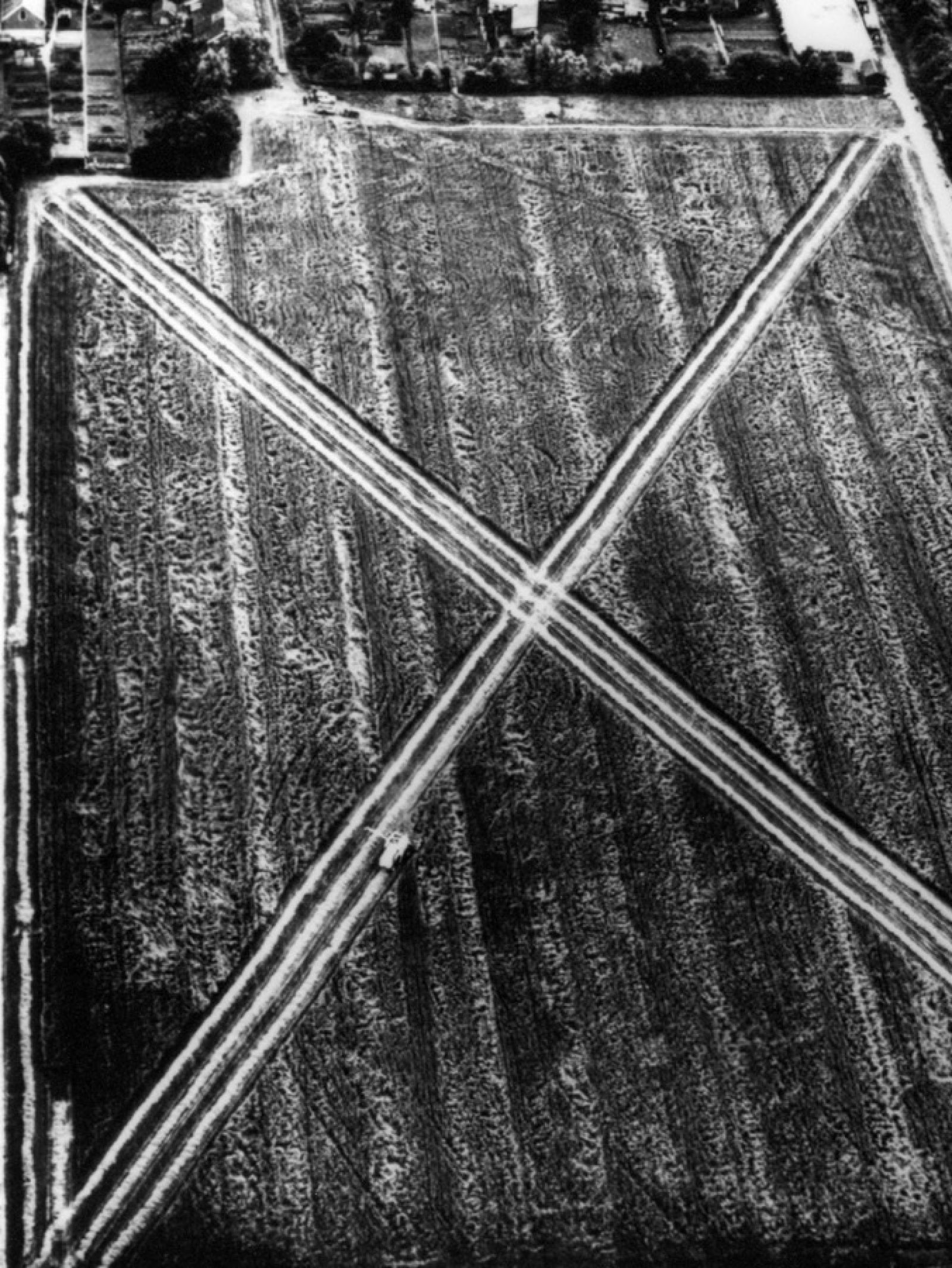Research
Metabolic Aesthetics: The Colonial Genealogies of Ecological Art, c. 1970
Christopher Williams-Wynn

Dennis Oppenheim, Directed Seeding/Cancelled Crop, 1969 "The route from Finsterwolde (location of wheat field) to Nieuwe Scans (location of storage silo) was reduced by a factor of 6 X and plotted on a 154 X 267 meter field. The field was then seeded following this line. In September the field was harvested in the form of an X. The grain was isolated in its raw state.” Credit: Courtesy Dennis Oppenheim Estate.
This research project focuses on the central yet overlooked role of plants in the interdisciplinary emergence of ecological art in the years around 1970. Addressing transregional histories of plants and land-use practices, this project provides a new perspective on artists from the Americas and Europe. It aims to understand how colonial legacies shaped the discursive and medial conditions of ecological art, from its techniques and locations to materials and processes. Drawing on archives, libraries, and museums in Berlin, and supported by a method informed by theories of metabolic rift, the project will interrogate long-held assumptions about the site-specificity of environmental art, opening it to multiscalar and transcultural readings. Similarly, by focusing not on the depiction of plants but their incorporation into artistic projects under different social, political, and technical circumstances, the project explores how imperial histories were sedimented within artistic practice. This new perspective will demonstrate how ecological works negotiated the patterns of exchange, extraction and exploitation that course through the interlinked histories of art and empire.
This project is part of the Research and Fellowship Program 4A Laboratory: Art Histories, Archaeologies, Anthropologies, Aesthetics, a cooperation between the Kunsthistorisches Institut in Florenz – Max-Planck-Institut and the Stiftung Preußischer Kulturbesitz.


